Innovation in Higher Education
I spent the better part of last week at CNIE 2014 in Kamloops where I got to enjoy some good sunshine, great TRU hospitality, great music, and good presentations and conversations with old and new colleagues. It was probably the first time I’d been to a conference where I left with a feeling that there was a common angsty thread in many of the discussions around innovation, nicely kicked off by Audrey Watters and already captured on her blog Hack Education (how does she do that so fast??) and wrapped up by Brian Lamb (not yet posted but hopefully captured).
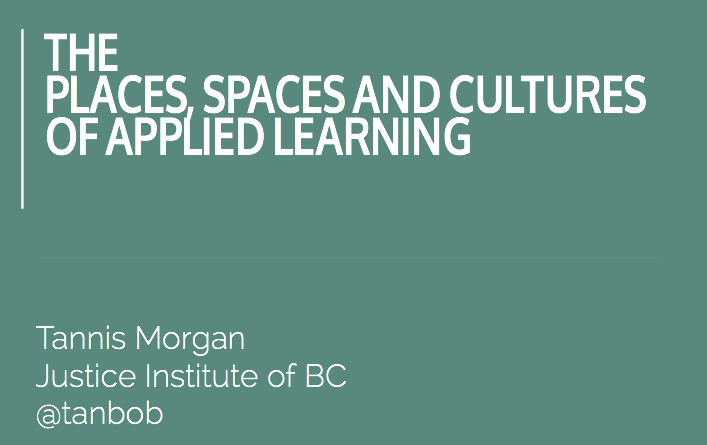 The purpose of my presentation–slides here–was to talk about how an over-investment in the LMS occurs at the expense of innovative tools that we need in our sector to address our teaching and learning problems. I don’t feel like vendors really provide us with the tools we actually need, and perhaps they shouldn’t be providing them anyways. I use JIBC as an example of an institution whose roots are genuinely in experiential, real-life, and applied learning, but as more and more of our contact hours go online, we are left with few, if any tools that allow us to do appropriately.
The purpose of my presentation–slides here–was to talk about how an over-investment in the LMS occurs at the expense of innovative tools that we need in our sector to address our teaching and learning problems. I don’t feel like vendors really provide us with the tools we actually need, and perhaps they shouldn’t be providing them anyways. I use JIBC as an example of an institution whose roots are genuinely in experiential, real-life, and applied learning, but as more and more of our contact hours go online, we are left with few, if any tools that allow us to do appropriately.
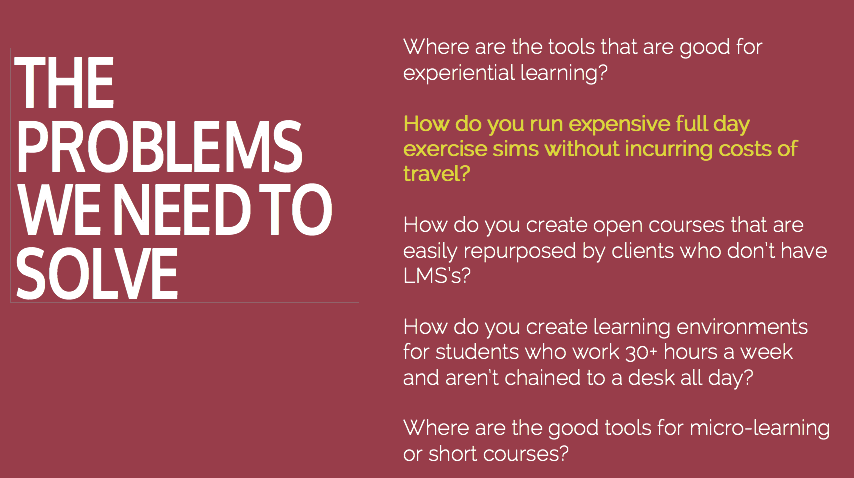
The LMS is both everything and nothing at our institution–it allows us to go online with our content and provide greater access to the students we reach in 183 communities across BC, but it is hardly the ideal tool for experiential and applied learning. It is also not ideal for open courses such as this one (for which we increasingly use WordPress), 1-3 day short courses (the bread and butter of our institution), or very specific learning environments such as simulations.
In my presentation I point to three examples of tools created at public post-secondary institutions in response to problems that needed to be solved that couldn’t be solved by an LMS. The first was Praxis, a web-based synchronous tool created at JIBC for conducting live simulation “exercises”. This tool is now an increasing part of our programming, because it allows us to do online what we were well-known for face-to-face.
The second is Radicl, a BCIT- created tool for the Medical Radiography program which allows for logging and critiquing images between instructors, students, and preceptors.
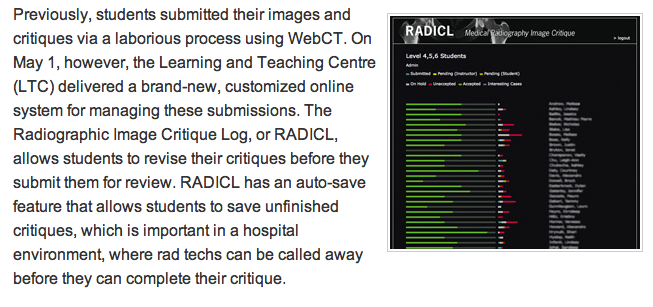
The third is one I was introduced to at the conference, a type of competency tracking tool called Power for logging medical student case logs, created at U of T Faculty of Medicine in conjunction with a vendor.
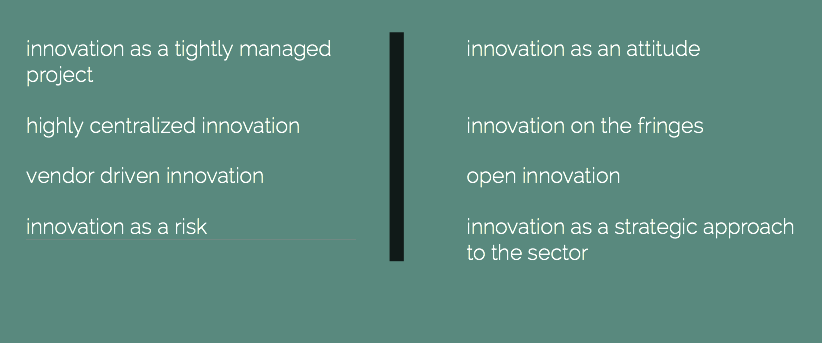 All of these tools demonstrate the degree to which public post-secondary education can be innovative and create innovative tools. Unfortunately, they are all currently closed innovations despite being tools that have relevance and use across the sector. U of T shares IP with the vendor that developed it, and both Praxis and Radicl aren’t currently open for use in other institutions. In an era of diminishing institutional resources these tools are viewed by administrators as potential revenue streams and there is really no incentive to offer them up as open source tools to be shared across the sector. We would rather spend millions on low risk, yet low satisfaction (for the most part) vendor products than create tools that address our teaching and learning contexts and share them across the province. We view open tools as risky and resource intensive, yet we have entire teams dedicated to enhancing the LMS experience for students. We think that our institutions are too small or incapable of creating innovative things, yet we forget that the sector collectively has the capacity to take back our agency that we so willingly give to vendors who don’t share our interests.
All of these tools demonstrate the degree to which public post-secondary education can be innovative and create innovative tools. Unfortunately, they are all currently closed innovations despite being tools that have relevance and use across the sector. U of T shares IP with the vendor that developed it, and both Praxis and Radicl aren’t currently open for use in other institutions. In an era of diminishing institutional resources these tools are viewed by administrators as potential revenue streams and there is really no incentive to offer them up as open source tools to be shared across the sector. We would rather spend millions on low risk, yet low satisfaction (for the most part) vendor products than create tools that address our teaching and learning contexts and share them across the province. We view open tools as risky and resource intensive, yet we have entire teams dedicated to enhancing the LMS experience for students. We think that our institutions are too small or incapable of creating innovative things, yet we forget that the sector collectively has the capacity to take back our agency that we so willingly give to vendors who don’t share our interests.
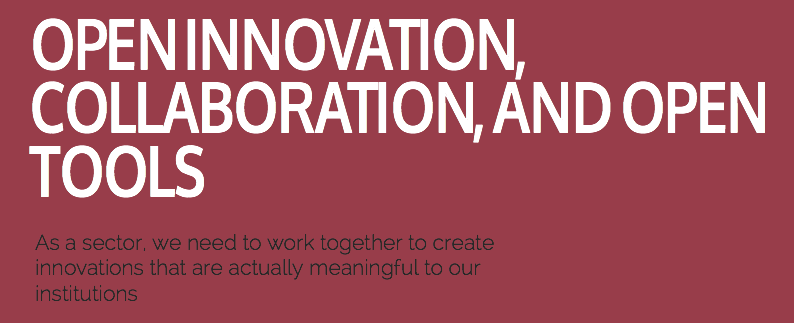
There is no doubt that vendors have created a buzzword out of innovation. But in the same way that public education has been able to take back textbooks and scholarly publications by adopting an open approach, a parallel activity needs to happen around open and collaborative innovation of our teaching and learning tools. To me, this is a much less risky, and more sustainable approach to our sector.
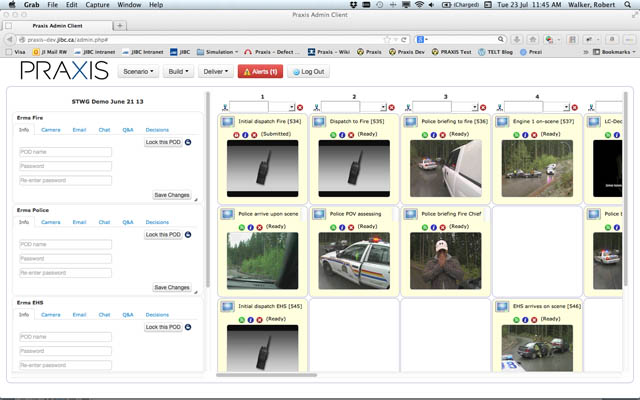
One Comment
Pingback: